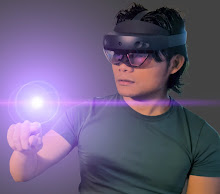Thinking about the philosophy of technology
We have gotten so used to technology being part of our lives and our experience of this world that if we remove just a few of them, it will significantly alter not only our living operationally, but also the meaning that might come from its removal.
The philosophy of technology, as a broad field of inquiry, grapples with the deep and often invisible integration, exploring questions about technological determinism, the mediation of human experience (Ritter, 2024), the relationship between technology and society, and the fundamental ways in which our tools shape who we are and how we understand the world.
I am narrowing my research scope to the area of technology as mediating human experience (“Mediation Theory,” 2016). It was only very recently revealed to me that technology might be seen as the manifestation of our relationship with the natural environment. This really exposes my ignorance, or rather my profoundly deep level of immersion in the technology-altered world, that I have taken technology for granted. I can possibly only appreciate the alternative view when the technology to which I am hyper accustomed to is removed, and then I’ll sure be forced to change my perspective and attitude towards my natural world.
This has led me to discover and read about Don Ihde’s contribution to this broad area. He emphasised the need for empirical investigation into how particular technologies mediate our experience of the world(“Technology and the Lifeworld,” n.d.). He insisted on looking at actual artefacts and their roles in shaping human perception, action, and understanding. I think, upon first glance that the unique combination of mixed reality digital twin (MRDT) hits on the four human-technology relations, which is Ihde’s framework for understanding mediation: embodiment, hermeneutic, alterity and background relations.
Embodiment Relations
Technology is experienced as part of the body, extending human perception/action.
Example: Eyeglasses, a blind person’s cane
Schema: (human-technology) → world
How does the mixed reality interface become an extension of the user’s perception and action within the hybrid physical-digital environment?
Hermeneutic Relations
Technology represents or translates the world, requiring interpretation by the human.
Example: MRI scans, thermometers
Schema: human → (technology-world)
How do the digital twin elements serve as representations that users interpret to understand the real-world entity they mirror?
Alterity Relations
Technology is interacted with as a quasi-other, with the world in the background.
Example: ATMs, robots, vending machines
Schema: human → technology (world)
In what ways do users interact with the digital twin as a distinct entity within the mixed reality space?
Background Realtions
forms the context or environment for human experience, often unnoticed.
Example: Lighting, heating, ambient sounds
Schema: human (technology/world)
How does the presence of the mixed reality environment and the digital twin subtly shape the user’s overall experience and understanding of the real and virtual?
If I can focus my research question further, I would really like to investigate how MRDT technology mediates the human and their environment. MRDT as being the mediator and the background. It really is multi-faceted in its characteristics. It is also the focus as well as the medium in which we interpret it. I will need to properly select and justify my methodology to extract the information I need.
Data collection methods
In order for me to properly capture the experience accounts and see them through Ihde’s framework for understanding mediation, I need to have a robust data-collection method/s. To further strengthen this, I would like to employ methodological triangulation. It will at least allow me to cross-validate my findings and mitigate each method’s inherent biases. Not to mention a more comprehensive understanding by capturing different nuances and facets of the experience.
I would prefer to have at least 3 methods to accurately TRI-angulate the data. So far, the following methods are currently deemed as the most appropriate:
Semi-structured interviews
Multi-perspective camera
Optional method 3 – Participant Observation
References
Mediation Theory. (2016, March 6). Peter-Paul Verbeek. https://ppverbeek.org/mediation-theory/
Ritter, M. (2024). 5. Technological Mediation without Empirical Borders. In B. De Boer & J. Zwier (Eds.), Phenomenology and the Philosophy of Technology (1st ed., pp. 121–142). Open Book Publishers. https://doi.org/10.11647/obp.0421.05
Technology and the Lifeworld. (n.d.). Indiana University Press. Retrieved April 18, 2025, from https://iupress.org/9780253205605/technology-and-the-lifeworld/

